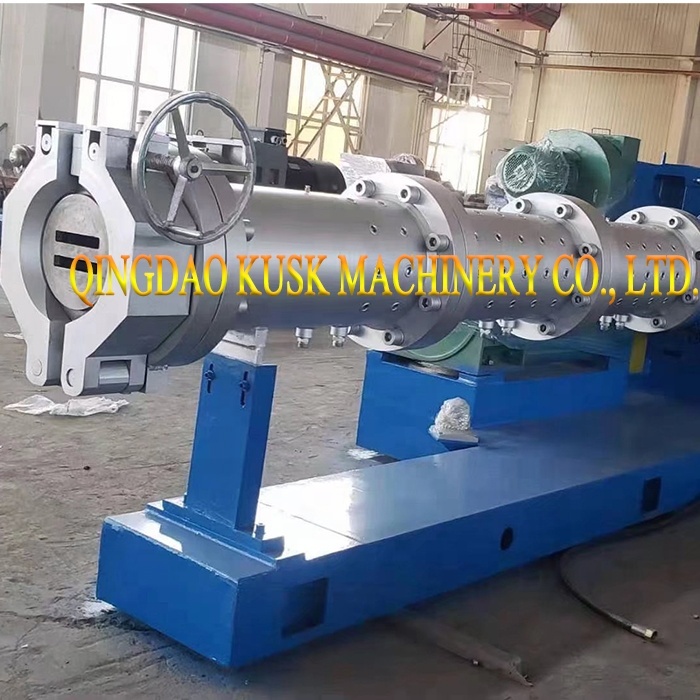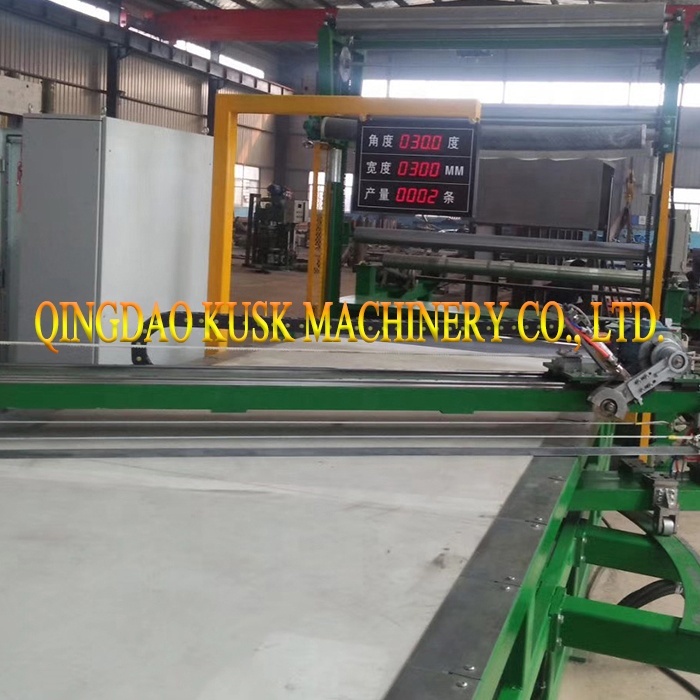Professional manufacturer with the design, development and production of rubber and plastic machinery
The Science Behind Vacuum Rubber Vulcanizing Press Technology: A Comprehensive Guide
Oct 04,2025
The Science Behind Vacuum Rubber Vulcanizing Press Technology
Table of Contents
- 1. Introduction to Vacuum Rubber Vulcanizing
- 2. What is Vulcanization?
- 3. The Importance of Vacuum in the Process
- 4. Mechanics of Vacuum Rubber Vulcanizing Press
- 5. Material Science and Rubber Compounding
- 6. Advantages of Vacuum Vulcanizing Technology
- 7. Applications of Vacuum Vulcanizing in Industry
- 8. Future Trends in Rubber Vulcanization
- 9. Frequently Asked Questions
- 10. Conclusion
1. Introduction to Vacuum Rubber Vulcanizing
Vacuum rubber vulcanizing is an advanced method used in the production of rubber products. By employing controlled vacuum conditions, this technology enhances the quality and durability of rubber components. As industries increasingly demand higher standards of product performance, the adoption of vacuum vulcanizing presses is becoming more prevalent.
This article explores the scientific principles behind vacuum rubber vulcanizing, examining its mechanics, material science, applications, and future trends.
2. What is Vulcanization?
Vulcanization is a chemical process that transforms rubber into a more durable material by adding sulfur or other accelerators. The process creates cross-links between polymer chains, enhancing the mechanical properties of the rubber.
The traditional vulcanization process involves heating rubber in the presence of sulfur, which leads to increased elasticity, resilience, and strength. However, the introduction of vacuum technology has revolutionized this process, yielding products with superior quality.
3. The Importance of Vacuum in the Process
The use of a vacuum during the vulcanization process offers several advantages:
1. **Elimination of Air Pockets**: A vacuum environment removes air bubbles, ensuring uniform material consistency and improving the mechanical properties of the final product.
2. **Reduced Oxidation**: By minimizing exposure to oxygen, vacuum vulcanizing reduces the oxidation of rubber, leading to longer-lasting products.
3. **Enhanced Cure Efficiency**: The absence of air improves the heat transfer within the rubber material, resulting in a more efficient curing process and shorter production times.
4. **Improved Surface Finish**: Vacuum conditions contribute to a smoother surface finish, which is crucial for applications requiring precision and aesthetics.
4. Mechanics of Vacuum Rubber Vulcanizing Press
The vacuum rubber vulcanizing press operates through several key components:
- **Pressing Mechanism**: This component applies controlled pressure to the rubber material, facilitating even distribution and optimal curing.
- **Heating System**: Integrated heating elements ensure that the rubber reaches the required temperature for vulcanization.
- **Vacuum Chamber**: The heart of the press, the vacuum chamber creates the necessary low-pressure environment for effective vulcanization.
- **Control Systems**: Modern presses incorporate advanced control systems that allow for precise adjustments of temperature, pressure, and vacuum levels, ensuring consistent product quality.
The interplay of these components allows for a highly efficient and effective vulcanization process, resulting in high-quality rubber products.
5. Material Science and Rubber Compounding
Understanding the material science behind rubber compounding is essential for optimizing the vulcanization process. The selection of appropriate fillers, plasticizers, and accelerators plays a significant role in the final properties of the rubber.
1. **Fillers**: Commonly used fillers like carbon black and silica enhance strength and durability while affecting the viscosity of the rubber compound.
2. **Plasticizers**: These additives improve the flow properties of rubber, facilitating easier processing and shaping.
3. **Accelerators**: These chemicals speed up the vulcanization reaction, allowing for shorter curing times without compromising on quality.
The interplay of these components can be finely tuned to achieve specific performance characteristics in the final rubber product.
6. Advantages of Vacuum Vulcanizing Technology
The adoption of vacuum vulcanizing technology offers several significant advantages:
- **Higher Quality Products**: The removal of air and the controlled environment lead to products with fewer defects, resulting in higher customer satisfaction.
- **Cost Efficiency**: Although the initial investment in vacuum technology may be higher, the long-term benefits include reduced material waste and lower production costs.
- **Environmental Benefits**: Vacuum vulcanizing minimizes the release of harmful emissions, contributing to a more sustainable manufacturing process.
- **Versatility**: This technology is applicable to a wide range of rubber products, from automotive parts to industrial seals.
By leveraging these advantages, manufacturers can enhance their competitive edge in the market.
7. Applications of Vacuum Vulcanizing in Industry
Vacuum rubber vulcanizing technology finds applications across various industries:
- **Automotive**: Used in the production of tires, gaskets, and seals, ensuring high performance and durability.
- **Aerospace**: Critical components require materials that can withstand extreme conditions, making vacuum vulcanizing essential for reliability.
- **Consumer Goods**: Rubber products such as footwear and household items benefit from the high-quality characteristics achieved through vacuum vulcanization.
- **Healthcare**: Medical devices and equipment often use vacuum-vulcanized materials for enhanced safety and performance.
The versatility of vacuum vulcanizing technology allows it to meet the diverse needs of these industries.
8. Future Trends in Rubber Vulcanization
As technology evolves, the rubber vulcanization process is expected to undergo significant advancements:
1. **Automation**: Increasing automation in manufacturing processes will enhance efficiency and reduce labor costs.
2. **Smart Materials**: The integration of smart technology into rubber products will pave the way for innovative applications, such as self-healing materials.
3. **Sustainability**: A growing emphasis on sustainable practices will drive the development of eco-friendly rubber compounds and processes.
4. **Enhanced Performance Metrics**: Research into high-performance additives will lead to products that meet the stringent demands of modern industries.
These trends indicate a promising future for vacuum rubber vulcanizing technology.
9. Frequently Asked Questions
1. What is the main advantage of vacuum rubber vulcanizing?
The main advantage is the elimination of air pockets, which leads to enhanced product quality, durability, and consistency during the vulcanization process.
2. How does vacuum pressure affect the vulcanization process?
Vacuum pressure facilitates better heat transfer and material consistency, allowing for more efficient curing and improved surface finishes.
3. Can vacuum vulcanizing be applied to all types of rubber?
While it is effective for various rubber types, the specific formulation of the rubber compound will determine its suitability for vacuum vulcanizing.
4. What are the environmental benefits of vacuum vulcanizing?
This process reduces emissions and waste, contributing to more sustainable manufacturing practices in the rubber industry.
5. How does the automation of vacuum vulcanizing presses impact production?
Automation enhances efficiency, reduces labor costs, and ensures consistent product quality through precise control of the vulcanization process.
10. Conclusion
Vacuum rubber vulcanizing press technology represents a significant advancement in the rubber processing industry. By leveraging the principles of vacuum and material science, manufacturers can produce high-quality, durable rubber products that meet the growing demands of various industries.
As we move forward, embracing automation, sustainability, and innovation will be crucial for maximizing the potential of this technology. The future of vacuum rubber vulcanizing is bright, and its applications will continue to expand, ensuring a significant impact on the landscape of rubber manufacturing.
Hot Tags:
Contact Us
E-mail:
tender701@gmail.com
tender701@163.com
Phone/WhatsApp:
+86 137 9243 6835
Address:
Huangshan Economic Zone, Huangdao, Qingdao,China



